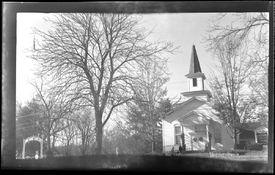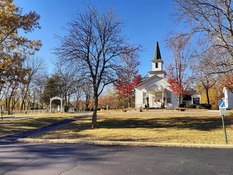First full size negative update...
Now that I had settled on a 3.75" x 6" cut size for the negative, I needed something for my Jobo that would handle that. I did two - a single sheet horizontal reel, and a two sheet vertical reel. The smallest Jobo that either one will fit in is a 1540. Doing the math on minimum developer needed, minimum volume needed, etc.... the two sheet reel is a pretty good match for a 1540, whereas a single sheet of this size is a bit wasteful. I did a 3:1 dilution of D76 as a starting point, 470ml liquid volume in total.. I just did a single sheet for this first test, not really knowing what I was going to find. (Ignore the fact that this Jobo extension piece in the pic says 1530... if you know Jobo you know the 1530 extension bit and the 1540 extension bit are identical, except for the volumes printed on the side).
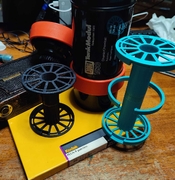
As I mentioned in an earlier post, I had some old Plus-X pan sheets that I cut down for testing. 125 ASA. It was bright and sunny today, and I ventured out around 3pm in the afternoon and choose an old church that was well lit by the sun. I went two stops down from 16... to what was marked as American 64, which I translate to F32 and a shutter speed of 1/25 to go with that. Set focus to 100 feet.
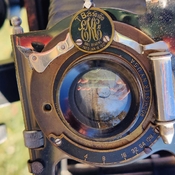
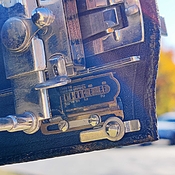
Composition was kinda hard. I was on a tripod and that helped, but the "viewfinder" is just a little 45 degree angled mirror you look through and it's a tiny image. Confirming level was difficult, so I'm thinking I may want to take a level with me next time, or see if I don't have a better tripod head somewhere with a level on it. I was aware I can't really fix the crop in post processing like I'm used to (e.g. I'm full frame contacting printing this). Actually taking the picture was super anti-climatic after all the adjusting and maneuvering of the tripod.... just a tiny little click, barely audible.
Back home, I loaded the horizontal single shot reel without much difficulty - film had a little more play in it than I would like, so might tweak that if I reprint the reel (3D printer). 13 minutes of D76 3:1 totaling 470ml in a Jobo 1540 CPE2. Happy to see I had an image when I popped the tank. This at least will give me something to test the printing side of this little project while I continue to work on exposure and development.
I'll let it hang to dry overnight (that ridge on the bottom of the hanging neg is water) and then inspect it and comment more about it tomorrow. I took a snap with my phone of the same church from the same spot also and I'm kinda interested to compare the two and learn a bit more about how to compose with this thing. I'd like to see a little clearer base on the negative, but it's old film so maybe that's a factor.
In parallel with all the above, I came across some bargain Ortho film:
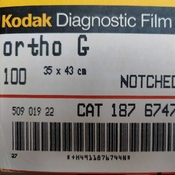
It was suggested a few posts back that Ortho film might be a better modern match to film used in 1908, so I wanted to experiment with that idea. I've not been able to find much about this particular film, so I cut a 120 sized strip and tried to roll it up with some used backer. This film is really thick and I got a little too greedy, trying to roll maybe 8 6x6 shots of it onto a roll... it was a bit oversized when I was done, but I got it loaded up in my Hassy. Took some shots as ASA 1, 5, 10, 25... trying to figure out what speed to shoot this. Developed it in D76 1:1 12 minutes. Top and bottom third of the film was badly fogged and I could see some faint impressions of text from the backing paper, so I'm sure the fogging was from the roll being too fat and spilling out of the backing paper and reel. However, I could see in the center a bit of my test charts, and based on that, I think this stuff is a really low ASA - like 1 or 2. I think I'll try a cut sheet of it in the Kodak 3A at ASA 1 and see what happens. Gonna have to get me a baby snot thing as was suggested earlier to rig up a remote shutter, cause I think ASA 1 on this camera is going to demand some long exposures.










